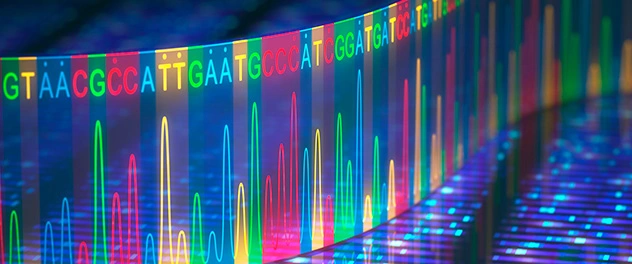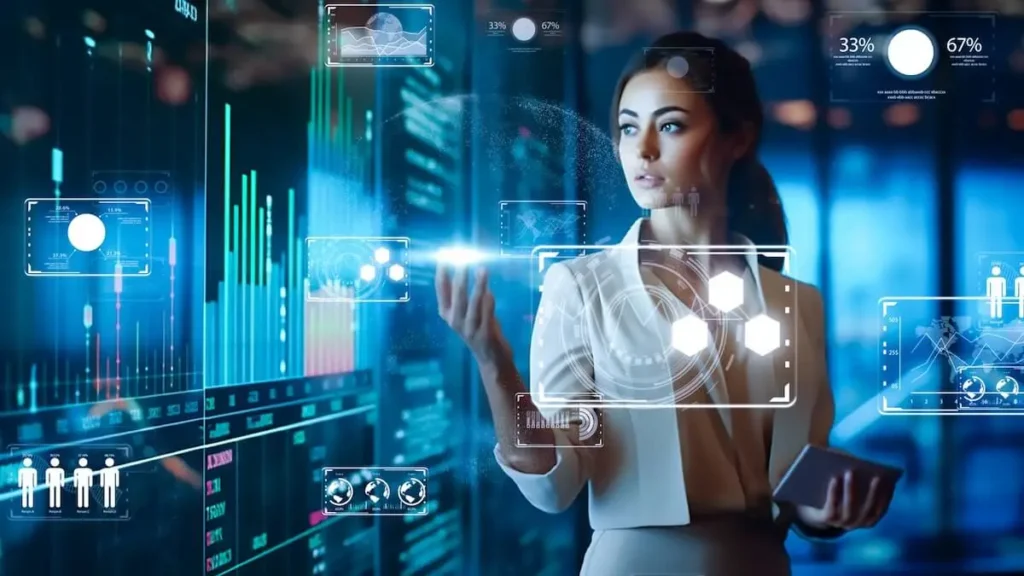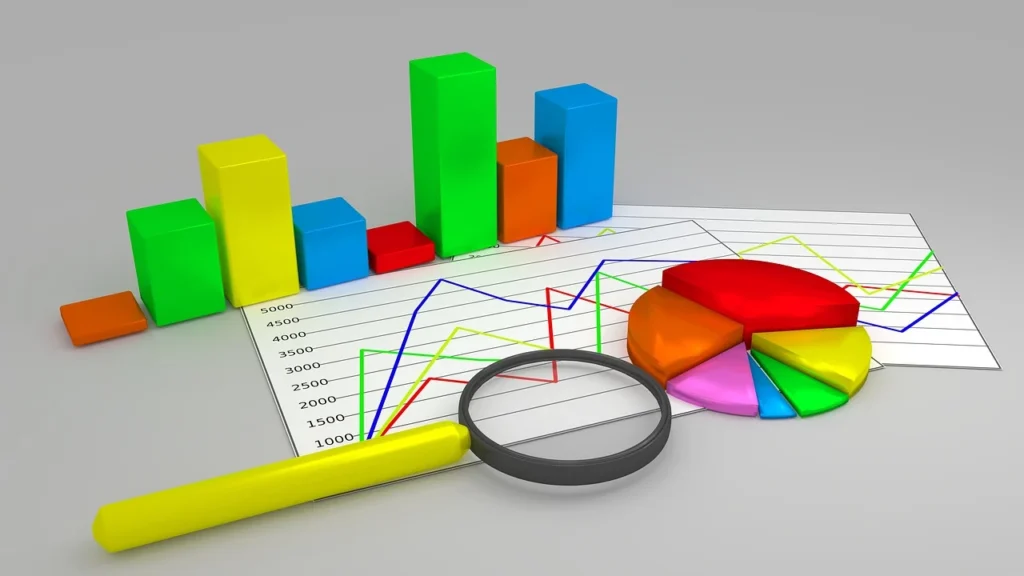Bioinformatics vs data science, two fields often mentioned in the same breath, yet distinct in their focuses and applications. Bioinformatics, often dubbed as biological data science, deals specifically with biological data, whereas data science encompasses a broader spectrum of data analysis across various domains. While both fields utilize data-driven approaches, they diverge in their methodologies, tools, and applications.
In this comprehensive exploration, we explore the landscape of Bioinformatics vs Data Science, sorting out their differences, similarities, required skills and shedding light on the promising career they offer.
Understanding Bioinformatics vs Data Science:
Bioinformatics:
Bioinformatics, as the name suggests, revolves around the intersection of biology and informatics. It involves the application of computational techniques to analyze and interpret biological data, ranging from DNA sequences to protein structures.
In bioinformatics, statistical analysis serves as a fundamental tool, but it’s not the sole focus. Beyond statistical analysis, bioinformaticians employ various data-driven research methods, such as phylogenetic analysis, genomic sequence alignment, and protein structure prediction, to unravel complex biological phenomena. For instance, in evolutionary biology, phylogenetic analysis is used to reconstruct the evolutionary relationships among species based on genetic data.
Example: A team of bioinformaticians is tasked with analyzing genomic data to identify genetic variations associated with a rare inherited disease. They employ various computational techniques, including sequence alignment algorithms and genome-wide association studies, to pinpoint genetic mutations linked to the disease phenotype. Through their analysis, they uncover novel insights into the disease mechanism and potential therapeutic targets.
As a biology field, there is often a confusion between bioinformatics and biostatistics or bioinformatics and computational biology. While these disciplines share commonalities and synergies, each field possesses distinct characteristics and offers unique contributions to the scientific landscape.

Data Science:
Data science, on the other hand, is a multidisciplinary field that encompasses statistics, machine learning, and computer science to extract insights and knowledge from data across different domains. It encompasses a wider array of data analysis techniques applicable across diverse domains, including finance, healthcare, marketing, and more.
While statistical analysis is a core component of data science, it also involves machine learning, data mining, and big data technologies to derive insights and make predictions from structured and unstructured data.
Example: In the realm of e-commerce, a data science team is tasked with improving customer retention rates. They analyze vast amounts of transactional data, user behavior patterns, and demographic information using machine learning algorithms. By identifying key factors influencing customer churn and building predictive models, they develop personalized retention strategies, such as targeted promotions and recommendation systems, to enhance customer loyalty and increase revenue.

Bioinformatics vs Data Science: Differences
While bioinformatics and Data Science converge on their fundamental reliance on data, several key distinctions differentiate their way of operating.
1. Domain Expertise
In bioinformatics, a deep understanding of biological concepts and processes is imperative. Researchers must possess domain-specific knowledge to contextualize their findings within the biology.
Conversely, Data Science emphasizes proficiency in statistical analysis, programming languages, and data manipulation techniques. While domain expertise is beneficial, Data Scientists often work across various industries, requiring adaptability and versatility
2. Tools and Methodologies:
While statistical analysis is central to both fields, bioinformatics employs specialized techniques, other than statistical programming for biosciences, such as sequence alignment and phylogenetic analysis. It employs specifics coding only for biological data like python for bioinformatics.
Whereas data science encompasses a broader array of methods including machine learning and data mining. Its leverages a diverse toolkit tools comprising programming languages (e.g., Python, R, SQL), machine learning algorithms, data visualization libraries, and cloud computing platforms
3. Data Types and Sources:
Bioinformatics predominantly deals with biological data, including genomic sequences, protein structures, and metabolic pathways. This data is often characterized by its complexity, high dimensionality, and specialized formats.
Data Science, on the other hand, encompasses a broader spectrum of data types, ranging from structured databases to unstructured text and multimedia. Data Scientists are adept at integrating disparate datasets from diverse sources to derive holistic insights.
Bioinformatics vs Data Science: Similarities
While bioinformatics and data science share commonalities in their use of data-driven approaches, they differ in their primary focus, methodologies, and applications. Here’s a breakdown of the key similarities between the two fields:
1. Data-Driven Approach:
Both bioinformatics and data science rely on data-driven methodologies to extract meaningful insights and solve complex problems.
2. Computational and Statistical Tools:
Both fields leverage computational tools and algorithms to analyze large datasets efficiently. From predicting protein structures to forecasting stock prices, coding and statistics serve as a powerful tool in both domains.
3. Data Visualization:
Effective communication of findings is paramount in both bioinformatics and Data Science. Data visualization techniques aid in conveying complex insights to diverse stakeholders, facilitating informed decision-making and driving scientific advancements.

Bioinformatics vs Data Science: Job Responsibilities and Skill Requirements
The job responsibilities and requisite skill sets for bioinformaticians and Data Scientists reflect the nuanced demands of their respective fields.
Bioinformatics: Job Requirements
- Sequence analysis and alignment
- Genomic data mining and interpretation
- Structural bioinformatics and protein modeling
- Development of bioinformatics tools and databases
- Collaboration with biologists and clinicians
Required Skills:
- Proficiency in programming languages (e.g., Python, R)
- Familiarity with bioinformatics databases and tools (e.g., BLAST, NCBI)
- Knowledge of statistical methods and machine learning techniques for biological data
- Strong communication and collaboration skills
Data Science: Job Requirements
- Data collection, preprocessing, and integration
- Exploratory data analysis and feature engineering
- Machine learning model development and evaluation
- Deployment of predictive models in production environments
- Continuous learning and adaptation to emerging technologies
Required Skills:
- Expertise in programming languages (e.g., Python, R, SQL)
- Proficiency in statistical analysis and hypothesis testing
- Experience with machine learning frameworks (e.g., TensorFlow, scikit-learn)
- Data visualization and storytelling abilities
- Problem-solving aptitude and creativity
Bioinformatics vs Data Science: Career Scope
Both bioinformatics and data science offer promising career opportunities with competitive salaries. In bioinformatics, professionals can pursue roles such as bioinformatician, computational biologist, or genomic data scientist in academic institutions, pharmaceutical companies, and biotechnology firms. The average salary for a bioinformatician ranges from $60,000 to $120,000 per year, depending on experience and location.
In data science, career paths include data scientist, machine learning engineer, and business analyst in industries such as technology, finance, healthcare, and e-commerce. The average salary for a data scientist ranges from $80,000 to $150,000 per year, with higher salaries for individuals with advanced degrees and specialized skills in machine learning and big data technologies.
The decision to pursue a career in bioinformatics vs Data Science hinges on individual interests, career aspirations, and desired impact. Both fields offer promising avenues for professional growth and societal contribution, albeit with distinct trajectories.
Bioinformatics vs Data Science: Conclusion
In conclusion, while bioinformatics and data science share common ground as data-driven fields, they diverge in their domain focus, methodologies, and applications. Bioinformatics, as a specialized branch of data science, delves into the analysis of biological data using computational techniques tailored to biological research questions.
Understanding the distinctions between these fields is essential for individuals considering career paths in either bioinformatics or data science, as each offers unique opportunities for research, innovation, and impact in their respective domains.



